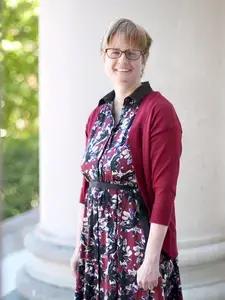
Biography
Ellen Perry received her B.A. from Swarthmore College where she majored in Greek and minored in Latin. She then went on to earn an M.A. and Ph.D. in Classical Art and Archaeology from The University of Michigan. In her youth, she excavated in Carthage (Tunisia), Qift (Egypt), Corinth (Greece) and at the Mission San Antonio de Padua in California; but now she spends most of her time thinking, writing and teaching about Roman art and architecture, with special attention to imitation and emulation in Roman art, ancient aesthetics, and the use of ancient religious space. She also teaches courses on archaeological ethics and on the modern use of archaeology in the construction of national and ethnic narratives.
In past years, Ellen served as President of CANE (The Classical Association of New England) and directed the CANE Summer Institute, a week of classes and lectures given by classics faculty from all over New England and the country. She currently serves as the Chair of the Archaeological Institute of America’s Program Committee, which vets papers, workshops, colloquia and posters for the Annual Meeting of the Archaeological Institute of America.
Ellen is a proud native of Washington DC, though she now lives in Douglas, MA, as close as possible to the Douglas State Forest. When she’s not doing classics, she can usually be found baking or checking up on her honeybees.
Recent Courses
- Intro To Classical Archaeology
- Greek and Roman Sculpture
- Ancient Sanctuaries & Religion
- Intermediate Greek 1
- Roman Comedy
- Ideological Destruction of Art
- Stolen History
Selected Publications
Book
The Aesthetics of Emulation in the Visual Arts of Ancient Rome, Cambridge University Press, 2005
Articles
“Edward Robinson’s Plaster Casts and the Battle for the Museum of Fine Arts,” in Pushing the Boundaries of Historia: Essays on Greek and Roman History and Culture in Honor of Blaise Nagy, eds. M. English and L. Fratantuono (forthcoming, 2017)
“Human Interactions with Statues,” in The Oxford Handbook of Roman Sculpture, eds. E. A. Friedland and M. G. Sobocinski with E. Gazda, Oxford University Press, 2015, pp. 653–666